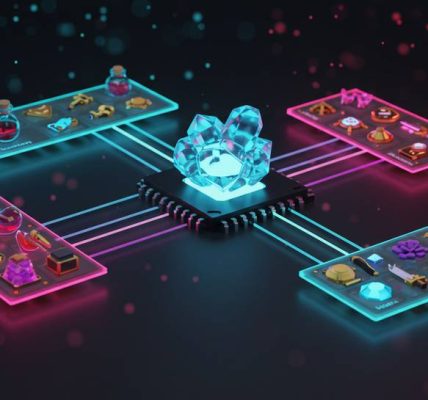In any multiplayer game, communication is the lifeblood of teamwork and community. Yet, creating a system that is clear, reliable, and non-toxic is a significant challenge for developers. Mastering the multiplayer communication best practices is not just about technology; it is about designing for player interaction. This guide breaks down the essential pillars, from technical optimization to community management, to help you build a better experience.
The foundational pillars of in game communication

Effective communication is not a single feature but a system built on three core pillars. Understanding these is the first step toward creating a robust and engaging player experience. Each pillar serves a different purpose, and applying multiplayer communication best practices means integrating them seamlessly to meet diverse player needs and enhance teamwork.
- Voice communication, or in-game voice chat, offers the most immediate channel for team strategy. Using VoIP allows for real-time coordination but presents significant moderation challenges. Curbing toxicity is vital to ensure a positive and collaborative environment for all players.
- Text chat provides a foundational and accessible alternative. It is essential for players who cannot use voice chat or are in noisy settings. Best practices include features like team-only channels, profanity filters, and clear UI presentation to prevent missed information.
- Non-verbal communication games use systems like contextual pings and emotes to convey complex ideas instantly. This method, popularized by games like Apex Legends, is crucial for accessibility and overcoming language barriers without a single word.
Optimizing technical performance for clear comms

A communication system is only as good as its technical backbone. Poor performance leads to delayed or garbled in-game voice chat, frustrating players and creating a competitive disadvantage. Focusing on optimization is one of the most critical multiplayer communication best practices, ensuring a smooth and reliable experience for everyone, regardless of their network conditions or hardware.
Key technical considerations for clear comms
- Choosing the right codecs: A codec compresses and decompresses audio data. The Opus codec is the industry standard, offering an excellent balance of high audio quality, low latency, and minimal bandwidth usage. This makes it ideal for the variable network conditions of online gaming.
- Managing bandwidth and packet loss: Games must use bandwidth efficiently. A robust system dynamically adjusts audio quality to prevent lag. Implementing packet loss concealment (PLC) is also vital to fill in data gaps and prevent the choppy audio that breaks immersion.
- Server architecture: For most competitive games, a client-server architecture is superior to a peer-to-peer model. Using dedicated servers provides a more stable, secure, and scalable solution for managing all communication traffic.
Designing an intuitive communication user experience
Beyond technical performance, the user interface and experience are paramount. If communication tools are confusing, players will ignore them, a flaw often highlighted in detailed game reviews. The goal is to make communication feel effortless and integrated into the gameplay loop. This approach is a core part of modern multiplayer communication best practices and directly impacts player engagement.
- Clear visual indicators: Players must always know who is talking. Use clear icons or nameplates on the HUD. Visual cues for muted players and different chat channels are essential for avoiding confusion during intense moments.
- Contextual ping systems: This powerful non-verbal tool allows players to ping locations, enemies, and items with a single button. The best systems offer context-sensitive options, providing deeper strategic layers without voice chat.
- Accessibility options: Provide robust text-to-speech and speech-to-text features. Offer extensive customization for audio inputs, push-to-talk toggles, and individual volume sliders to include all players.
- Seamless onboarding: Introduce communication features early through tutorials or tooltips. Do not assume players will discover these tools on their own. Encouraging use from the start builds good team habits.
Building a positive community through moderation

A game’s long-term success depends on its community health. Unchecked toxicity in communication channels drives players away faster than any bug or balancing issue. Implementing robust moderation is a non-negotiable part of multiplayer communication best practices. It is essential for building a sustainable and welcoming environment that encourages teamwork and retains players.
Proactive moderation tools
These systems are designed to prevent negative behavior before it escalates. They empower players and automate the first line of defense.
- Customizable profanity filters allow players to set their own tolerance for offensive language in text chat.
- Reputation systems reward positive behavior while isolating players with a history of negative reports.
- Simple one-click muting and blocking give players immediate control over disruptive individuals.
Reactive moderation and enforcement
When negative behavior occurs, players must trust that their reports will be acted upon. A transparent enforcement process is key to this.
- An effective player reporting system allows users to flag toxic behavior with specific categories, linked to match data.
- A clear code of conduct sets behavioral expectations and serves as the foundation for all moderation actions.
- Notifying players when their reports lead to action creates a feedback loop that builds trust in the system.
Implementing effective in-game communication goes far beyond simply adding a voice chat feature. It requires a holistic approach that balances technical performance, intuitive design, and robust community moderation. By focusing on these core areas, developers can create more engaging experiences and foster healthier, more sustainable player communities. For more insights into game development and mobile trends, explore Gaming Universe Mobile.



